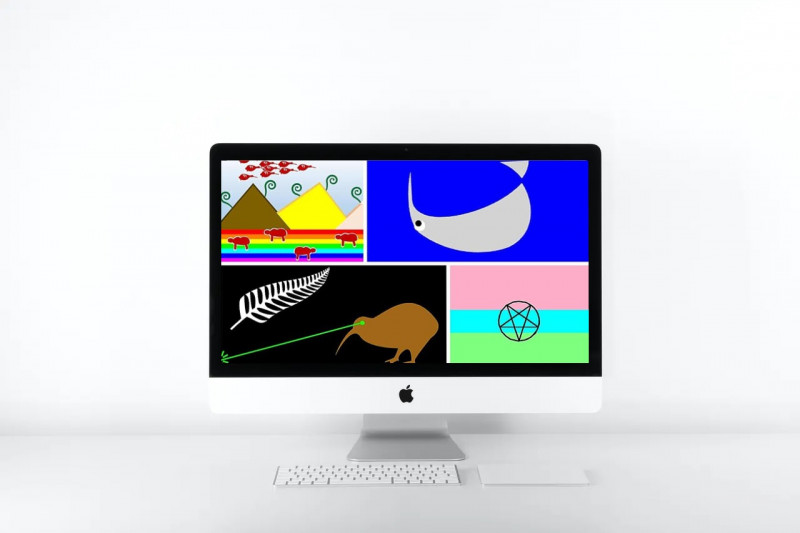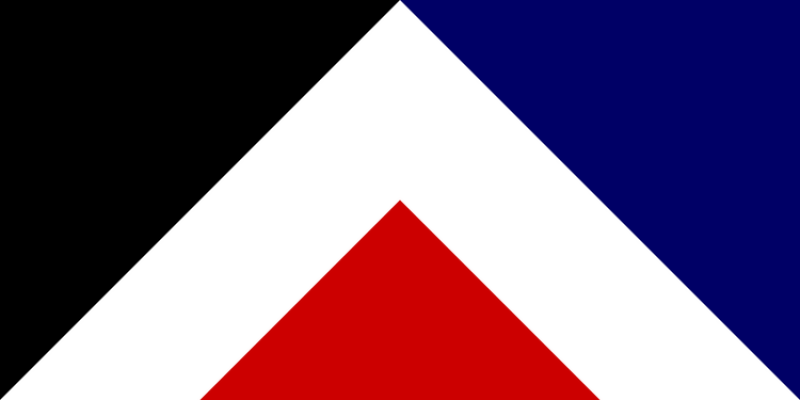Get in touch
Think that we can help? Feel free to contact us.
From 2015-2016 New Zealand spent $27 million and countless hours on a flag change that didn’t happen. Was it that New Zealanders like their current flag? Or was the process just so badly managed people voted for the status quo as a protest vote?
As a design process, it was a disaster and we’d often refer to it while discussing design processes with clients.
I should state I am not a designer, or a visual creative. But I have been lucky enough to work with talented designers and understand the value of a good design process.
Five years down the track the memory of the NZ flag referendum is beginning to fade, so I thought I’d dig it up and have a look at where things went wrong and what we can learn from it.
The Flag Consideration Panel was made up of “respected New Zealanders” and tasked with coming up with the final shortlist of flags to be voted on:
Chair: John Burrows, former deputy chancellor of the University of Canterbury
Deputy chair: Kate De Goldi, author
Julie Christie, reality television producer
Rod Drury, businessman
Rhys Jones, former Chief of the New Zealand Defence Force
Beatrice Faumuina, former discus thrower
Brian Lochore, former All Blacks coach
Nicky Bell, chief executive of New Zealand branch of Saatchi and Saatchi
Peter Chin, former mayor of Dunedin
Stephen Jones, youth councillor
Malcolm Mulholland, academic
Hana O'Regan, Māori studies academic
It’s pretty easy to spot the omission - there are no designers, artists, visual creatives or vexillologists (people who study flags) on the panel. This is like setting up a panel to shortlist the design of new parliament buildings without any architects or engineers.
The design of the new flag was open to anyone and the brief was very, very broad:
1. Have a look at what people stand for before you design your flag.
2. Ensure your flag design meets the minimum requirements of the Official Flag Guidelines.
3. Before you upload your flag design, crop it so that you can only see the design itself without any borders.
Some people would argue that isn’t even a brief and is up there with “do some things with stuff” in terms of guidance/ direction.
A clear concise brief is vitality important to a design process to give the designer guidance and act as the benchmark which the designs are measured against.
Interestingly at the time of the flag referendum I knew a number of professional designers who weren’t going anywhere near the competition because of all the mistakes I’m listing here. But “lack of a clear brief” was the most common criticism.
Without a clear brief you end up with a free style drawing/ colouring competition, which brings us to…
One of the great things about humanity is our ability to apply ourselves to many different and diverse activities. However, most of us will only excel at a few things that we have applied years of learning, practice and experience to.
Design, and more specifically flag design is a profession which people apply their whole working lives to master. By opening a flag design competition up to everyone you are inviting professional designers, enthusiastic amateurs, jokers and people with too much time on their hands to throw their creations into a giant online mixing pot.
10,000 flag designs were uploaded to New Zealand Government website, with “designs” like these:

Mixing it up with actual designs like this:

All of this made for some great comedy TV at New Zealand’s expense. But if you genuinely want quality design you’re best to leave it to design professionals.
The flag referendum was championed by John Key, the prime minister of New Zealand at the time. Many people agreed with the reasons - that New Zealand needed a flag that told our story, built on our brand and worked for the future, not the past. But the process was set up to fail and even worse John Key started showing preference for particular designs, symbols (the silver fern) and even designers.
The figurehead who was leading this “public choice” project was now telling the public which choice was right. Not only did the process feel flawed to many, but it was beginning to feel like a vanity project.
The reaction was inevitable - people saw the flag referendum as an opportunity to vote on John Key, not the future of the New Zealand flag:
UMR's earlier poll in January showed a significant chunk of voters -- one in five -- wanted a change but were voting to keep the current flag because they did not like the design of the alternative.
About 80 per cent of that same group were also likely to see a vote against change as a way to "send a message to John Key".
The most successful design in the world comes from teams of talented people working together with a common goal and vision.
Even a small agency like UpShift will use a team approach to design so people can build on each other’s work and complementary skill sets.
Great work barely ever occurs in isolation, but a competition where there is one winner promotes exactly the opposite of that.
Let’s be honest here: New Zealand isn’t a nation of artists and visual creatives. We are not well known for being stylish or tasteful. The best we can normally manage is self deprecating kitsch.
Much that crowdsourcing the designs was a mistake, having the general public vote on them was an even bigger one. What should have been a unifying process of nation building devolved into tribalism and division.
Where the public should have been involved is the beginning - to crowdsource a brief. What symbols, concepts, ideals do we value as a nation? How do we want to be seen by the world?
Gathering that information from the public and giving it to professional designers to interpret would have given us a far better outcome.
Imagine a large successful company announcing it was going to run a competition to replace its logo. The CEO espouses the importance of a new logo and mentions that they really like light bulbs. Staff at the company are encouraged to submit their logos to the company website. A panel of senior managers will then choose a shortlist to be voted on. The winner of that logo competition will then be pitted against the existing logo into another company wide vote.
To most people the idea of this approach is obviously flawed, bordering on insane. We wouldn’t expect this from a multi-million dollar company, let alone a wealthy country of 4.5 million people.
What would a better design process look like? If we can identify the above mistakes how would we do things differently?
This is what a good design process should look like:
Crowdsource the conceptual part: ask people what ideals, values, symbols, colours, visions matter to them.
Create a clear, concise brief from the crowdsourced feedback.
Engage design professionals to take the brief and develop some design concepts.
Gather feedback on the design concepts and rework into final designs.
Showcase the final designs to the audience, explain the stories behind them and how/ why the designs were developed.
Choose the final design on merit, not public opinion.
The final step is important and challenging. People generally dislike change and will have an initial (sometimes knee jerk) emotional reaction towards visual design. While the right design may not be loved at first if the process is correct & the thinking behind the design fits, the audience will embrace it in the future.
As you can see a good design process involves the audience at the beginning but then lets the professionals get on with their job - turning ideas into design.
Further Reading:
While gathering information for this post I came across this article by Simon Pound - who probably does a better/ funnier job than me for explaining what went wrong.
If you’re curious about what actual flag designers consider to be the principles of flag design check out “Good Flag, Bad Flag” or check out Roman Mar’s TED talk on city flag design.
Banner Photo by Jan Kaluza